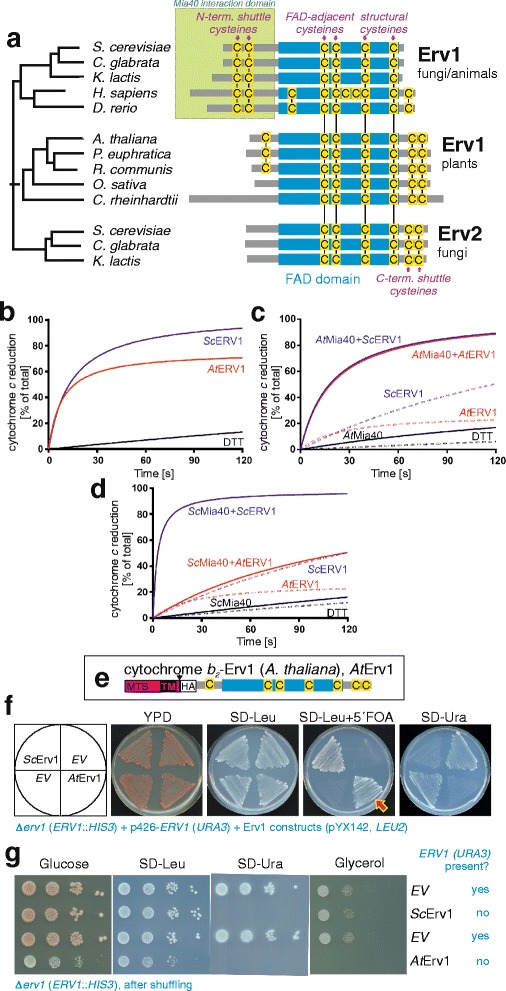Fig. 1.

The yeast ERV1 gene can be deleted upon expression of its Arabidopsis homolog. a Phylogeny and structural comparison of members of the Erv1 family (see Additional file 1: Figure S1 for details). An overview of the protein sequences is shown, in which all cysteine residues are indicated in yellow. b Reduction of cytochrome c (40 μM) by purified yeast or A. thaliana Erv1 (8 μM) in the presence of 100 μM DTT. A control measurement without Erv1 is shown (DTT). c Reduction of cytochrome c (40 μM) by 50 μM DTT alone or in the presence of 20 μM AtMia40, 8 μM AtErv1, 8 μM yeast Erv1 (ScErv1), or 20 μM AtMia40 combined with 8 μM AtErv1 or 8 μM ScErv1. d Reduction of cytochrome c (40 μM) by 50 μM DTT alone, or in the presence of 20 μM ScMia40, 8 μM AtErv1, 8 μM ScErv1, or 20 μM ScMia40 combined with 8 μM AtErv1 or 8 μM ScErv1. e Schematic representation of the AtErv1 protein used in this study. MTS mitochondrial targeting signal, TM transmembrane domain of cytochrome b 2 (residues 1–169) to verify IMS targeting, HA hemagglutinin tag. f By use of a plasmid shuffle strategy, a URA3 plasmid for the expression of yeast Erv1 could be replaced by a LEU2 plasmid harboring a gene for the synthesis of AtErv1 (red arrow). EV empty vector. g Strain in which the URA3 plasmid was replaced by a plasmid expressing yeast Erv1 or AtErv1, grown to log phase. Ten-fold serial dilutions were dropped on the indicated media. Whereas cells expressing the yeast Erv1 were able to respire, the AtErv1 mutant did not grow on non-fermentative carbon sources such as glycerol
